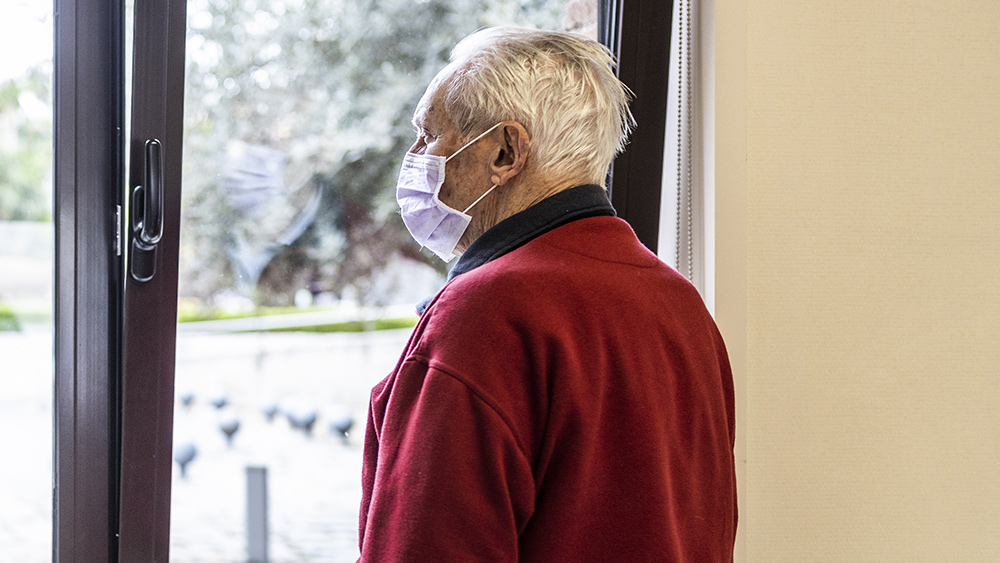Breathe easy: 3 Breathing exercises that help reduce anxiety
05/01/2020 / By Zoey Sky

Breathing exercises are a natural way of relieving stress and anxiety. If you’re feeling overwhelmed after a long day at work, try these breathing exercises to manage your stress.
Breathe in, breathe out
Anxiety and panic attacks can make your body react as if you’re facing an immediate threat.
If you’re living with an anxiety disorder, you may have experienced hyperventilating (over-breathing), which can be overwhelming and can have a significant physiological impact.
If you’re hyperventilating, you may experience symptoms such as:
- Blurred vision
- Breathlessness
- Confusion
- Dizziness
- Heavy sweating
- Increased heart rate
- Numbness in the extremities
Since respiration is a physiological system that is under both involuntary (autonomic) and voluntary control, breathing exercises are a great therapy for managing your stress or anxiety.
You can use breathing exercises to focus on counteracting the nervous system arousal linked to chronic anxiety. Even if you don’t have a diagnosed anxiety disorder, these exercises can be used as a relaxation technique when facing stressful situations.
For those with generalized anxiety disorder (GAD) and panic disorder (PD), breathing exercises can be used as coping mechanisms when worries or stressful events trigger an anxious response.
Breathing exercises can teach you how to reduce shallow chest breathing caused by chronic hyperventilation. When you learn how to breathe properly with these specific techniques, you can also naturally induce a state of relaxation and a feeling of self-control.
Diaphragmatic breathing
With diaphragmatic breathing, you can learn how to manipulate breath movements that turn chest expansion into abdominal expansion when breathing. In turn, you experience a physiological immediate response of decreased oxygen consumption, heart rate and blood pressure.
While the technique can be taught by a professional, you can also learn it on your own using audio or video tutorials. Diaphragmatic breathing teaches you how to pace breathing into slower and deeper breaths that can help you feel more relaxed.
Practice this technique for a couple of minutes several times a day , or as needed, to enjoy short-term benefits.
Pursed-lip breathing
This technique is best for relieving the symptoms of acute shortness of breath due to anxiety.
When practicing pursed-lip breathing, inhale through your mouth and exhale through pursed lips. Stretch out the exhalation phase as long as you can. (Related: Expert teaches the proper way of breathing to relieve stress and anxiety.)
Yogic breath regulation (pranayama)
Breath regulation is a crucial part of yoga. Various yoga breathing exercises are backed with scientific evidence, such as modifications in the breathing pace and breath retention.
Below are some exercises that you can try on your own:
- Active expiration – Contract your abdominal muscles as much as you can to increase pressure when you exhale and push all the air out of your lungs. This focused exhalation helps lengthen your exhalation and draw more air in when you inhale.
- Alternate nostril breathing (Nadishodhana/Nadishuddi) – Use your right thumb to close the right nostril, then inhale through the left nostril. Next, close the left nostril and exhale through the right nostril, inhaling through the same side and doing the same on the opposite nostril.
- Bellow’s breath (Bastrika) – Inhale and exhale quickly and forcefully without straining by flapping your abdomen. Practice at least 100 breaths for better results.
- Kapalabhati – Sit in a relaxed position, but keep your back and neck straight. Inhale through both nostrils and exhale rapidly by flapping the abdomen during each exhalation at a pace of 60 and up to 120 breaths per minute.
- Psychic breath (Ujjayi) – Inhale and exhale through your nose at a normal pace. Be mindful of the air that passes through your throat as you breathe. Try to produce a light snoring sound.
- Uninostril breathing (Suryanuloma Viloma and Chandranuloma Viloma) – When you inhale and exhale, do it through the same nostril. Close the other one without changing the pace of your breathing.
Unlike medication, these simple breathing exercises are free and they don’t cause negative side effects. Additionally, you can do them in any quiet room whenever you want to.
If you’re new to these breathing exercises, start practicing them by paying attention to your breath daily. Observe each breath and don’t try to alter it in any way. As you get used to observing your breathing, practice the exercises as detailed above.
The next time you’re stressed and anxious, try a calming breathing exercise.
Sources include:
Tagged Under: anxiety relief, breathing, breathing exercise, breathing techniques, Diaphragmatic breathing, how-to, Meditation, mental health, pranayama, Pursed-lip breathing, remedies, rest and relaxation, stress relief, yogi breathing regulation




















